Enabling Developer Mode
Once you receive your Poynt Developer Unit, you’ll want to put your Poynt device into Developer-Mode.
This puts the device into a state that allows you to install your development APKs on the device.
Pre-requisites
- Android SDK with android-api 19 (Kitkat) installed on your development machine
- Poynt Developer Unit
Setup Device Drivers
For Windows Users
In Android Studio go to SDK Manager and install Google USB Driver.
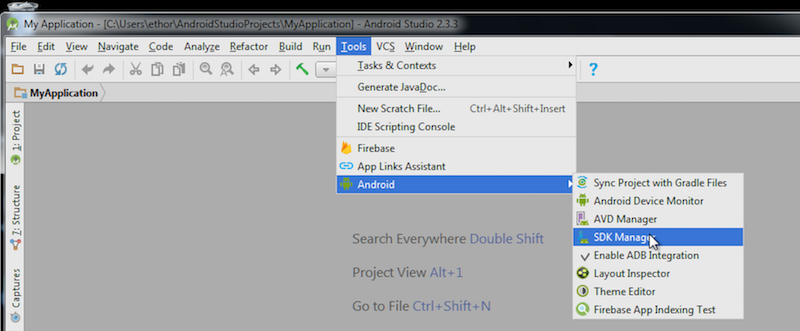
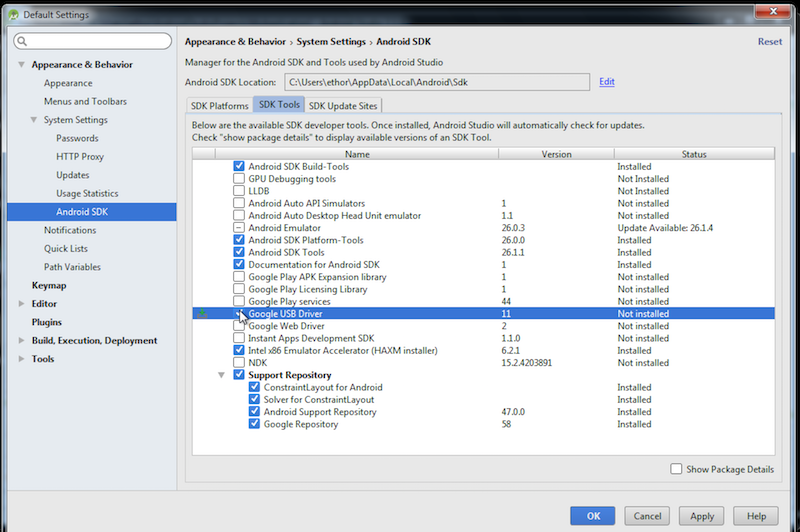
Open android_winusb.inf in Notepad
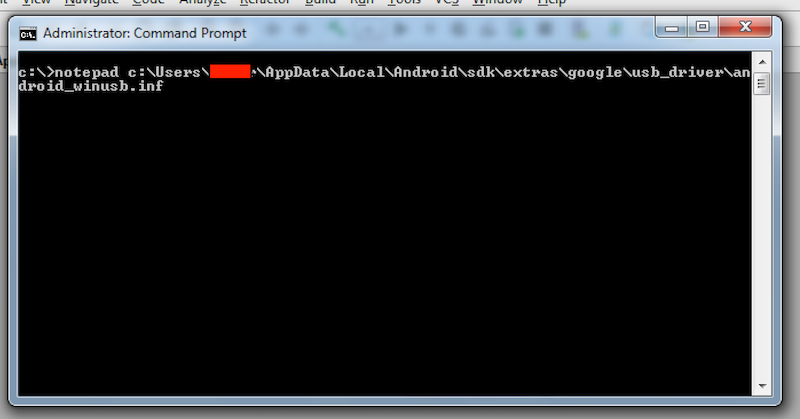
Add the following configuration block to the [Google.NTamd64] and [Google.NTx86] sections and save the file.
;Poynt
%SingleAdbInterface% = USB_Install, USB\VID_2BF9&PID_3302
%CompositeAdbInterface% = USB_Install, USB\VID_2BF9&PID_3302&MI_01
;Poynt Fastboot
%SingleAdbInterface% = USB_Install, USB\VID_0955&PID_CF01
%CompositeAdbInterface% = USB_Install, USB\VID_0955&PID_CF01&MI_01
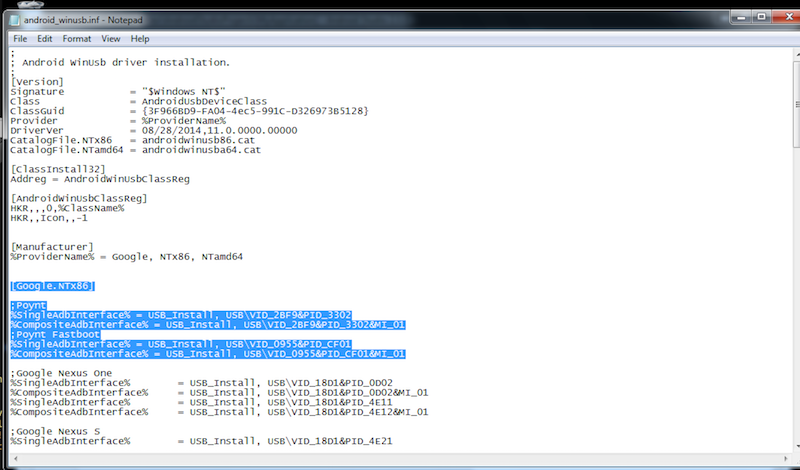
Connect Poynt to your PC using a micro-USB cable (not included with the devkit), open Device Manager, right click on Poynt and select Update Driver Software.
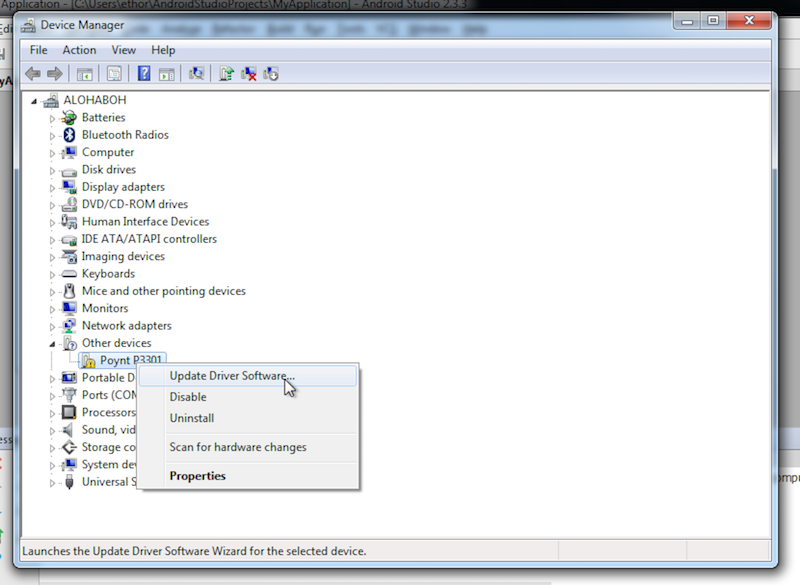
Select Browse my computer..
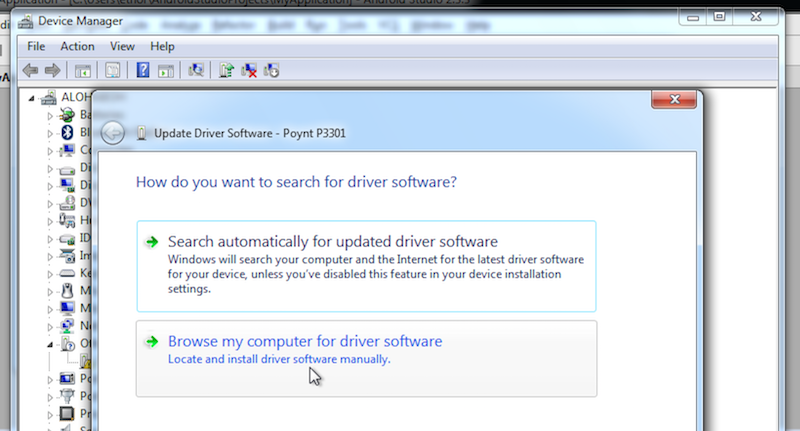
Browse to C:\Users\{username}\AppData\Local\Android\sdk\extras\google\usb_driver\ and click Next.
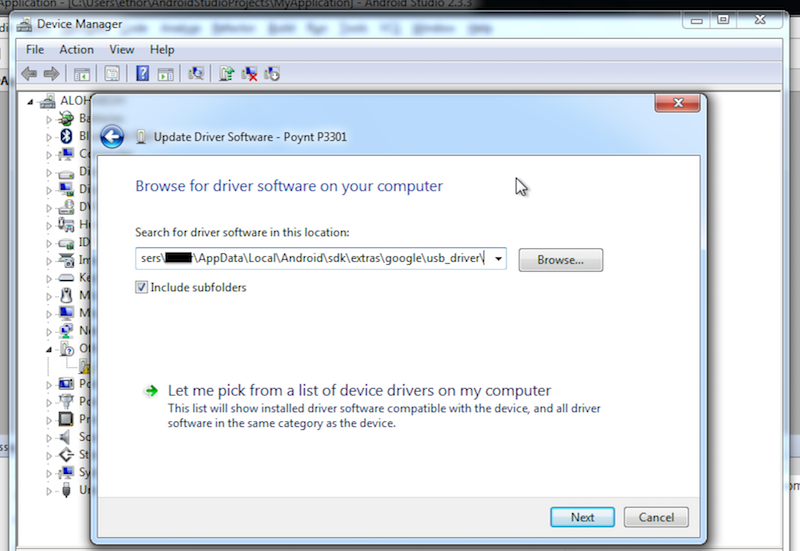
Poynt driver is unsigned, so Windows will display a warning, select Install this driver software anyway.
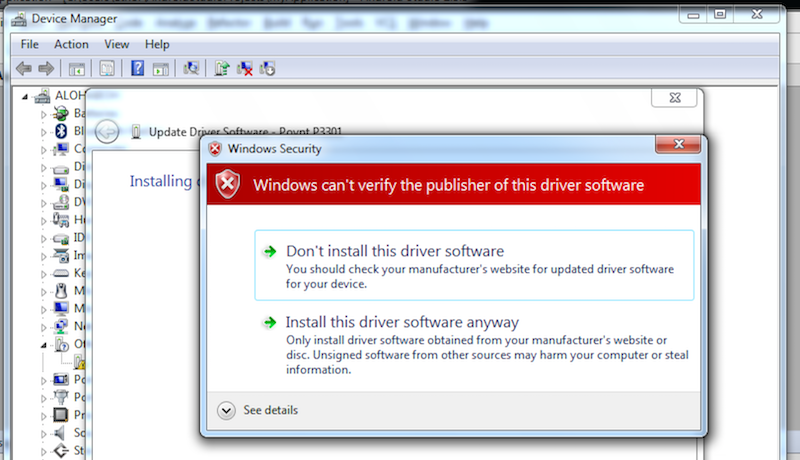
You should see a success confirmation on the next screen, and Device Manager will show a new Android Composite ADB Interface
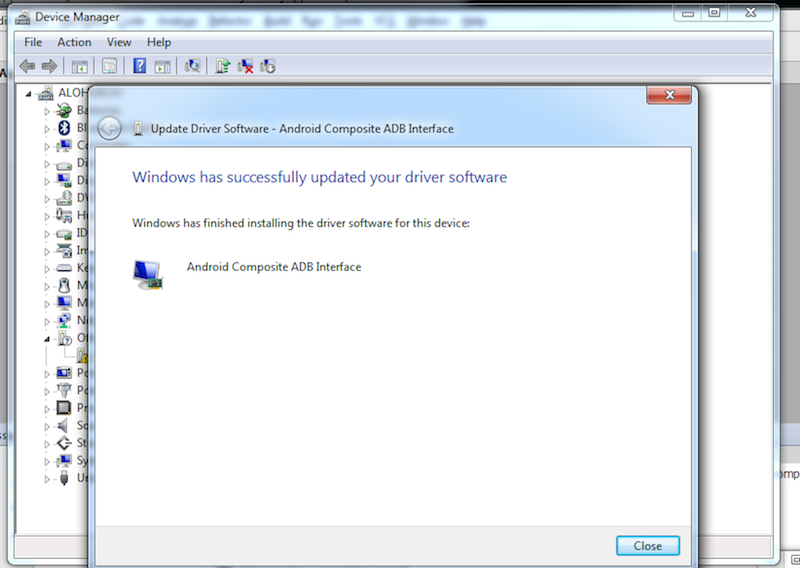
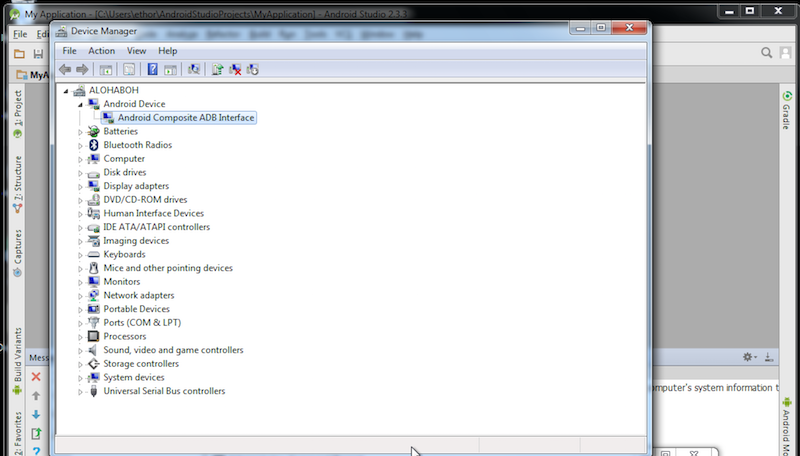
You should be able to see Poynt by running adb devices in command line (Note: adb and fastboot executables are located in C:\Users\{username}\AppData\Local\Android\sdk\platform-tools\).
Windows 10 Users
If are on Windows 10 you may encounter the following error:
Windows encountered a problem installing the driver software for your device. Windows found driver software for your device but encoutered an error while attempting to install it. The hash for the file is not present in the specified catalog file. The file is likely corrupt or the victim of tampering.
To proceed you will need to disable Device Driver Signing (please refer to this) and re-do the steps above.
For Mac OS X/Linux Users
Add {SDK_LOCATION}\sdk\platform-tools to your PATH environmental variable. To find out your Android SDK location, open Android Studio, Go to Android Studio->Preference->System Settings->Android SDK.
On some Linux distributions, you may be able to install Android SDK tools with apt-get command:
apt-get install android-tools-adb android-tools-fastboot
Ensure your device is properly connected via USB by running fastboot devices command on your host machine.
If your host machine runs on Linux and does not recognize the device please follow the instructions starting at Step 3 in this Android User Guide. You can find out the vendor id, by running lsusb in the Terminal window.
If your are unable to see the device after following the steps above, run the following command:
echo "0x2BF9" >> ~/.android/adb_usb.ini
Additional step for Linux
Add line:
SUBSYSTEM=="usb", ATTR{idVendor}=="2bf9", MODE="0664", GROUP="plugdev" # Poynt
to /etc/udev/rules.d/51-android.rules
Unlocking Device
Poynt Smart Terminal
- Put your device into fastboot mode by holding the power and volume up button while the device is powered off. For more information about what fastboot does, see: http://elinux.org/Android_Fastboot
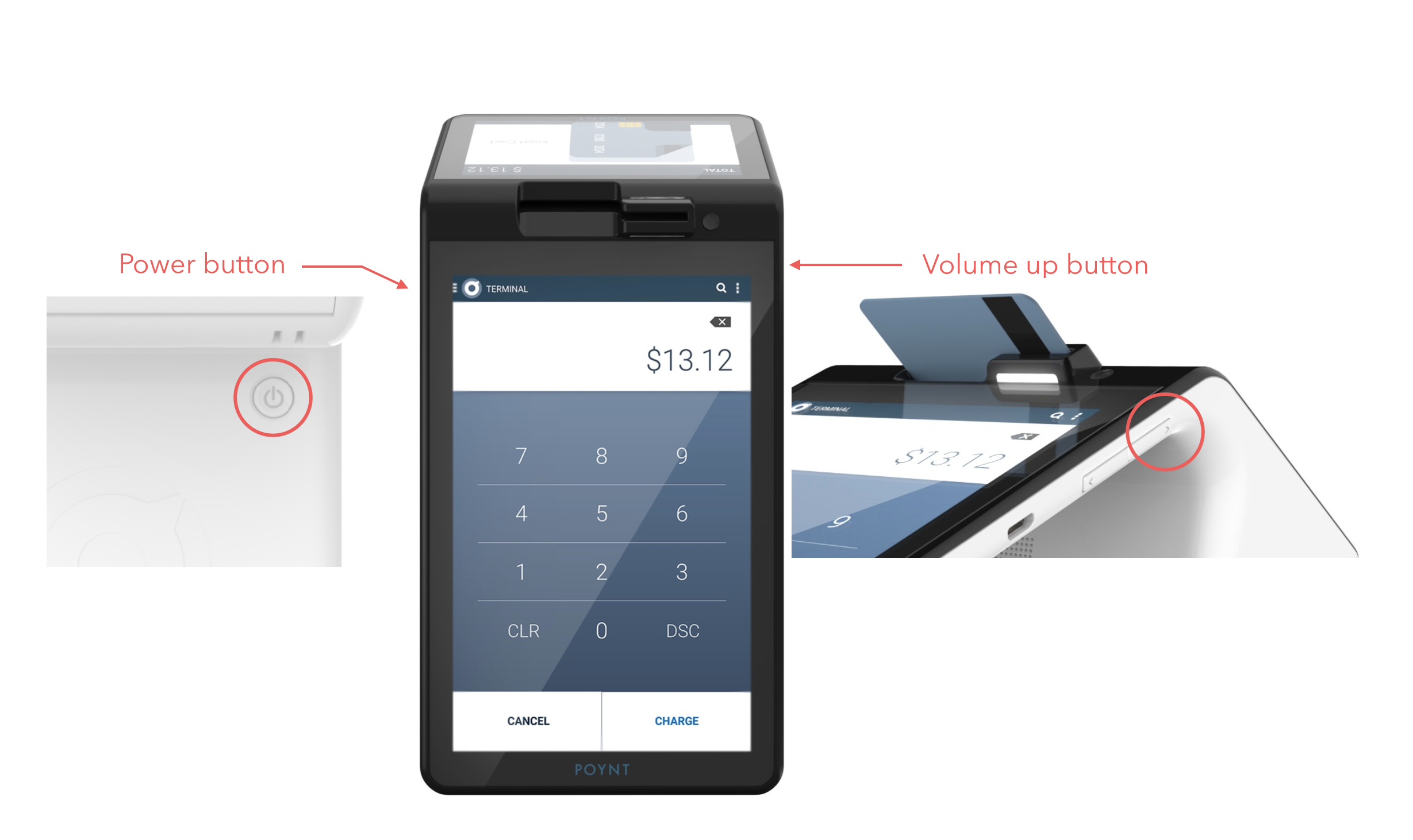
- Select Fastboot Protocol from the fastboot menu (press volume down button then power button). Screen will flicker and return to fastboot menu.
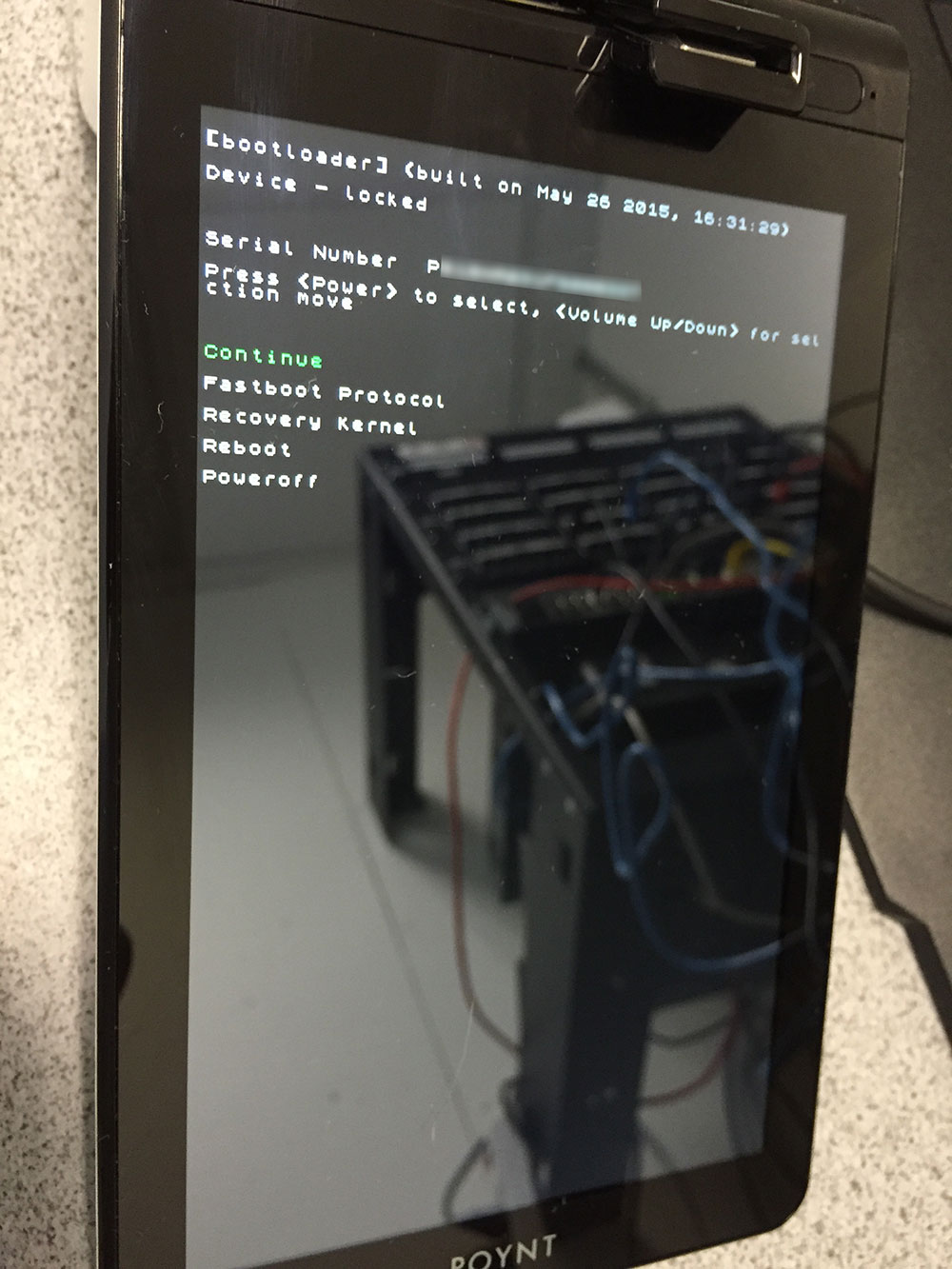
- Make sure you have the Android SDK tools installed on your computer. You’re going to need the
fastbootcommand. Ensure your device is properly connected via a micro USB cable. - Run the command to initiate the developer mode process on Poynt Smart Terminal:
fastboot oem developer(If you are using Poynt 5 please refer here)
- Read the instructions on the Poynt Terminal, press the volume down button to move selection to
Enter developer modeand Press the Power button to select. At this point your device will clear its cache and the device state in the bootloader screen should showUnlockedorDeveloper mode. - Reboot device

Poynt Smart Terminal v2
- Put your device into fastboot mode by holding the power and developer button while the device is powered off. For more information about what fastboot does, see: http://elinux.org/Android_Fastboot

Note: A pin or paper clip is needed to access the developer button
-
Select Fastboot Protocol from the fastboot menu (press developer button to navigate and then power button to select). The device enters fastboot mode with a beep sound (takes 5-10 seconds)
- Make sure you have the Android SDK tools installed on your computer. You’re going to need the
fastbootcommand. Ensure your device is properly connected via a micro USB cable. - Run the command to initiate the developer mode process on Poynt Smart Terminal:
fastboot flashing unlock(If you are using Poynt 5 please refer here) - Read the instructions on the Poynt Terminal, press the developer button to unlock the device
- Reboot device

Poynt5
- shutdown the device
- start by holding barcode button (left side key) + pull down power switch at the same time until you see the bootloader menu.
- on screen select fastboot by using the barcode button and home button to select
unlock on fastboot: you need adb version >= 1.0.36 - execute
fastboot flashing unlock - select OK, with Barcode button (button, on the left side of the terminal)
- After unlock process finished execute
fastboot reboot - If reboot does not get initiated just use the power switch to initiate reboot
Terminal Activation
Activate your Poynt terminal. Note: If you’ve previously activated your device, you can reuse your test MID and TIDs to reactivate.